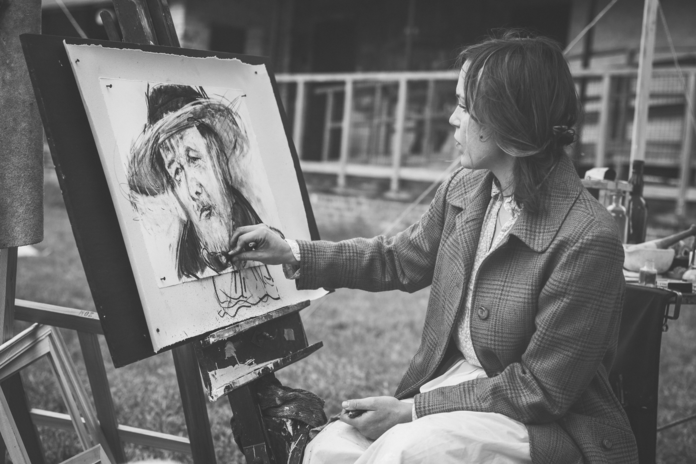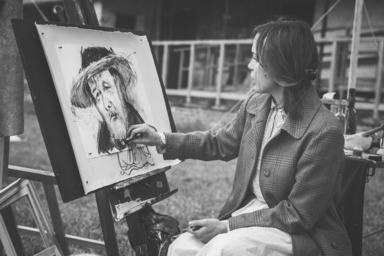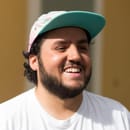With the internet being so easy to access, it has become easier for independent artists to find an audience and let their work be known. As a result, a variety of movements, collectives, and scenes have found a way to pave their path. The independent art scene in Puerto Rico is no different. Recently, many artists from a variety of disciplines have found platforms that have made it easier for them to share their work. In addition, small businesses such as Electroshock in Santurce and Rio Piedras, bars like Off The Wall in Mayaguez, book stores like La Casita Books and Gifts in Aguadilla, Libros AC in Santurce and Libros 787 online, and independent festivals like Feria de Libros Independientes y Alternativos and Tintero: Festival de Cómics y Arte Independiente de Puerto Rico have provided up-and-coming artists a space to display their talents. “Puerto Rican Women Killing It in the Independent Art Scene” is a series of interviews that provides a glimpse at some of the women who have recently gained recognition in the art scene. Though the artists are asked similar questions, some are asked queries surrounding their work, specifically.
Krisia Ayala is an illustrator and art educator.
What got you into the visual arts?
When I was around three years old, I told my mom I wanted to be an artist. Since then, my mom signed me up in a number of workshops starting at Cuartel Ballajá, Estudio Luna in Old San Juan and La Liga de Arte. Once I turned 14, I started taking classes at Escuela de Artes Plásticas and learned to do comics and illustration. I then started taking after-school classes in Old San Juan with Abdiel Segarra, Rafael Miranda, and Osvaldo Budet, which lead me to start creating a network of artists who respected the craft and had a great sense of humor. I then discovered that I wanted my art to be respected.
How did you develop your style?
I developed my style by doing a number of portraits in my high school. People would constantly ask me for a drawing of their loved one, and I would draw them. Then I started to pay attention to the trends and started to use my art to connect with others. The joy that my art was generating motivated me to ask more questions and focus on the needs of others. This helped me master multiple illustration styles and techniques.
How has it evolved through the years?
I grew up humble, in Cataño. My mom and dad would try to get me the materials I needed, but for the most part, I had to work with random things and improvise. That “testing” element definitely became part of my process. Now I see things as a “print on a surface” I want to experiment with everything.
(Pajareando por Puerto Rico – Bird watching through Puerto Rico – Artist Book – 2011)
What are some of your influences and inspirations?
It’s hard to pick someone who could be my biggest inspiration. There are multiple layers in my art practice, and a very important one is my focus in the study of avian migration.
If I had to choose my biggest influence I would say the ornithologist James Bond. He was an expert in Caribbean birds and wrote the definitive book on the subject: Birds of the West Indies (1936). He motivated me to find a connection between my interests in science and art. By exploring Puerto Rico through his eyes and findings, I discovered a source of inspiration that I have shared in multiple parts of the world.
(“Your departure and rain” – Risograph on archival paper – 2018.)
Is there any other form of art you wish to pursue? If so, what field and why?
Fabrication has always been an interest of mine. I’d like to spend time learning about how to generate work with different materials on a large scale.
What do you think about the current state of the arts in Puerto Rico?
I am surprised at how much it has changed, from my perspective. I believe that now artists are more self-driven and have more access to tools than ever before. However, with the constant hits on public education, the future seems grim for the next generations to come.
What do you think about the current state of the independent scene in Puerto Rico?
The community of independent artists is growing stronger every day. We see projects like Tintero and I can’t help to be hopeful about the future. I feel that as a scene, we need to start to build up spaces where we can see each other grow. I think the scene is learning from previous mistakes and it’s moving forward!
(Chango llorón – Black ink on paper – 2018)
If a young girl came up to you and said she wanted to be an artist, what would be your advice for her?
My advice would be very simple: Trust in yourself, be confident and allow yourself to fail. Today, there is more diverse participation in tech, arts, and design, but that doesn’t come without the challenges. It is important to create long-lasting connections and use networking opportunities. Those are extremely beneficial in the long run. One must be ready to do learn from each mistake to become the best version of yourself.
(The Birds, The Humans, and the Coast. -Visual of a migratory event captured via satellite imaging a Screen Print on Plexiglass – 2018)
What is your biggest goal right now?
My biggest goal right now is to get a big space and turn it into a big studio, so I can start creating large scale pieces.
What do you seek to achieve with work?
I want to create connections. I use my theoretical research to test everyday doubts, and I use that kind of work to create models that will help me understand societal problems. On the other hand, the characters in my illustrations are angry, sad, curious and mischievous. With my illustration work, I wish to show a part of myself I keep hidden from others. Both sides are an honest attempt to stay above water.
All of the pictures in this article were provided by Krisia Ayala


